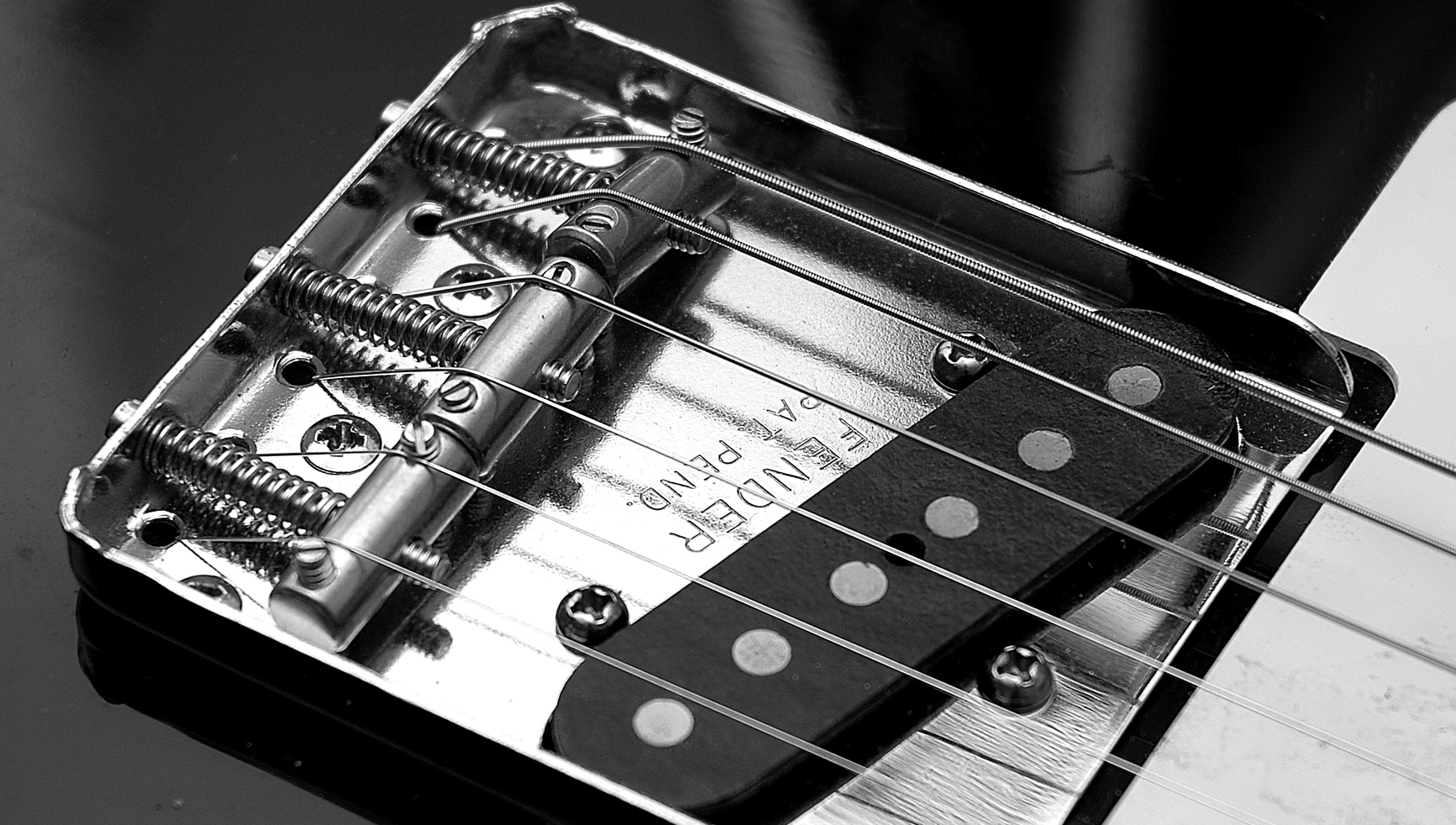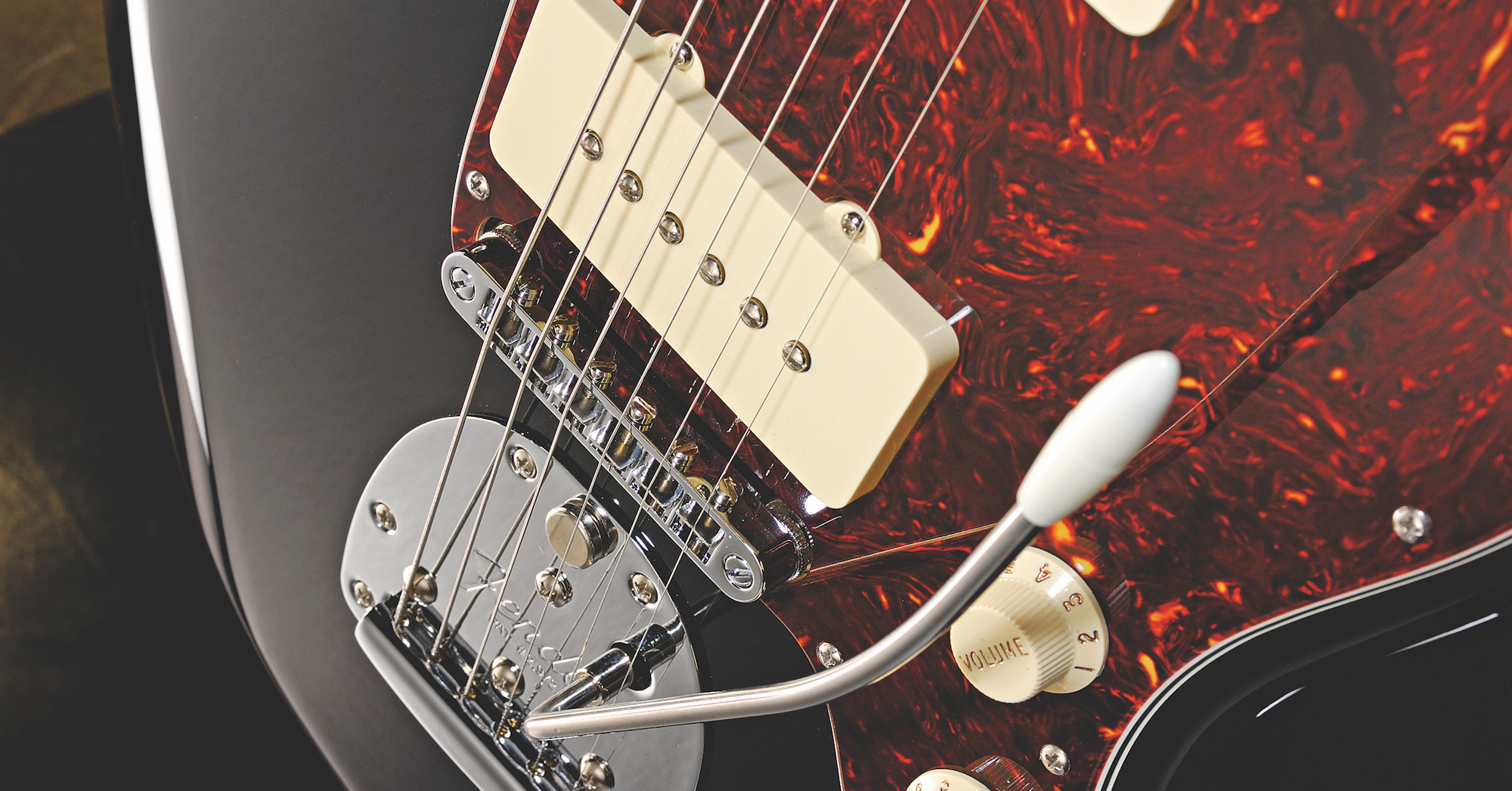Five Things You Need to Know About Bridges
The bridge is an essential link in the tone chain – ranking right up there with your guitar’s pickups and the wood the body is made from.

The bridge is an essential link in the tone chain, ranking right up there with your guitar’s pickups and the wood the body is made from in setting the core tone of the instrument, especially if you want to hear deep, harmonically rich resonance throughout the body of the guitar.
1. I Am Your Anchor; I Am Your Rock
Which is to say, solidity is important. This is the body-end termination point for your strings’ speaking length, and their vibration needs to pass through the bridge to get into the tonewood in the body. Therefore, the quality of the body’s resonance is going to be in great part determined by the composition and quality of the bridge (and tailpiece, if they are separate units).
2. Lightly Coupled Set-Ups Can Be Useful In The Tone Equation
Less-than-rock-like bridges can also contribute positively to the signature tones of several seminal guitars. For example, Gretsch guitars mounted with a Bigsby B3 or B6 vibrato tailpieces – which lack tension bars – will have fairly low string tension over a floating bridge, and the relatively light coupling of this setup is an important part of the jangle content in “that great Gretsch sound.”
Similarly, Fender Jazzmasters and Jaguars are made with vibrato units that present low string tension over moving “rocker” bridges. You can buy a device to increase string angle over the bridge, and therefore tension, which the maker purports will “improve tone,” but the only certain thing is that it alters the tone. Many fans of these guitars will tell you such an alteration robs the instruments of some of their distinctive sonic character.

3. Composition Affects Tone
Bridges and bridge saddles made from different materials resonate differently, and therefore make your guitar sound different.
Stamped steel (’50s and ’60s) and die-cast Mazac (’70s) Strat bridge saddles sound different; brass, threaded steel, and notched steel Tele saddles sound different; chrome-plated steel and nickel-plated aluminum wrap-over bridges sound different; floating bridges made from rosewood and ebony sound different; and so on.
Tonehounds will venture opinions as to which sounds better, but the only sure thing, objectively speaking, is that changing from one type to the other will change your tone slightly.
Get The Pick Newsletter
All the latest guitar news, interviews, lessons, reviews, deals and more, direct to your inbox!
4. You Won’t Play In Tune If It Isn’t Set Correctly
The adjustable element of your guitar’s intonation is set right here, and if you don’t get it right, you’ll never quite play in tune, no matter how accurately you tune up.
Guitars with three-saddle Tele-style bridges, wrap-over bridges, and single-saddle floating bridges offer fewer ways to fine-tune intonation, but Tune-o-matic bridges and Strat-style vibrato units and their derivatives provide excellent facilities for precise adjustment. This is also where string height is set, so it’s critical to any proper setup in several ways.
5. The Bridge Is Crucial In Determining a Guitar’s Feel
In addition to all of this, different bridges can make guitars feel different to play. Although the tension required to bring strings of the same gauge up to pitch is the same, those strung on a Strat-style vibrato or a Bigsby unit will have a slightly looser, spongier feel and be easier to bend than strings on a wrap-over or Tele bridge or similar.
This is because the springs in the vibrato unit offer a little “give” when you push the strings, and the added string length behind the bridge saddles contributes to this feel, too.
Dave Hunter is a writer and consulting editor for Guitar Player magazine. His prolific output as author includes Fender 75 Years, The Guitar Amp Handbook, The British Amp Invasion, Ultimate Star Guitars, Guitar Effects Pedals, The Guitar Pickup Handbook, The Fender Telecaster and several other titles. Hunter is a former editor of The Guitar Magazine (UK), and a contributor to Vintage Guitar, Premier Guitar, The Connoisseur and other publications. A contributing essayist to the United States Library of Congress National Recording Preservation Board’s Permanent Archive, he lives in Kittery, ME, with his wife and their two children and fronts the bands A Different Engine and The Stereo Field.
“Write for five minutes a day. I mean, who can’t manage that?” Mike Stern's top five guitar tips include one simple fix to help you develop your personal guitar style
"It’s like you’re making a statement. And you never know where it’ll lead." Pete Thorn shares the tip that convinced Joe Satriani he was the right guitarist for the SatchVai Band










